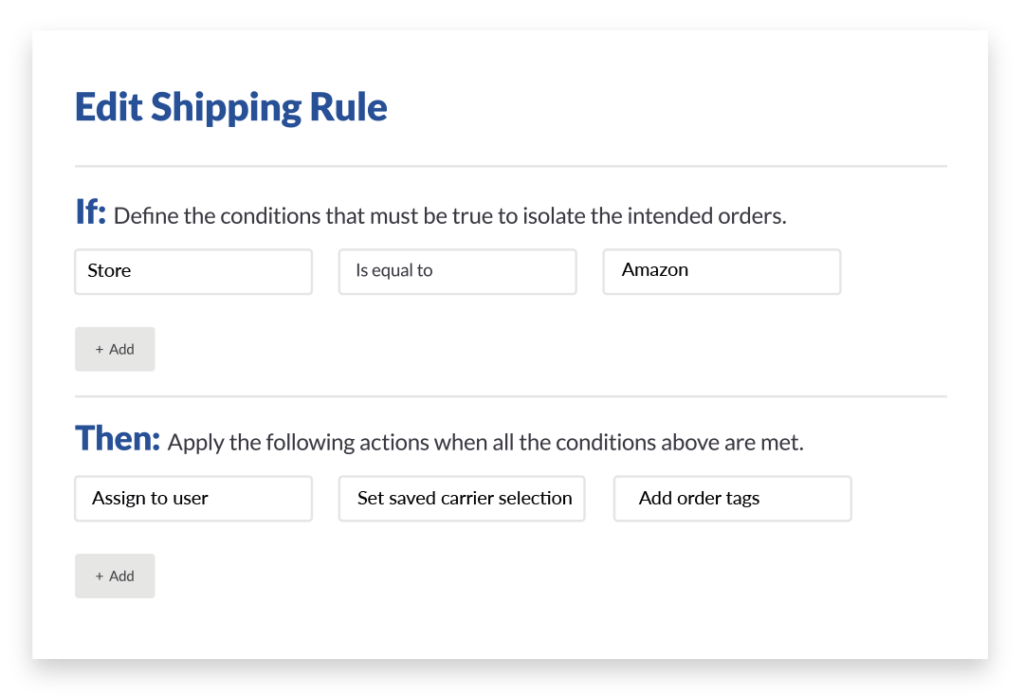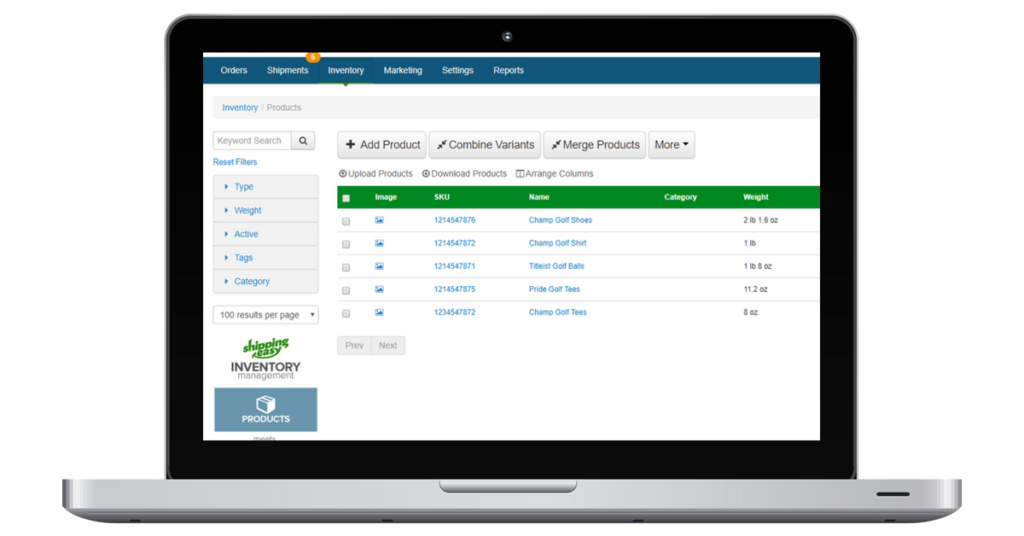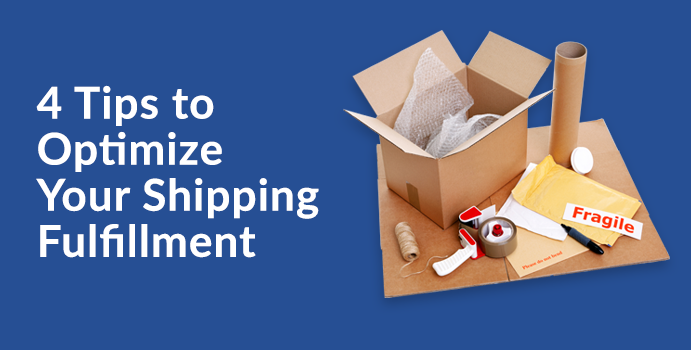Mastering your shipping fulfillment is more than just getting packages out the door. You need to look at the process from start to finish and figure out the opportunities to optimize every step of the way. Taking advantage of those opportunities can be the difference in whether your shipping overwhelms you or not, and whether shipping becomes a drain on your business or a chance to deliver a great customer experience. We will dive into a few of those opportunities to optimize in this article.
Whether you’re a business of one, or running a multi-user, multi-location shipping department, we hope to provide some insights here that will help you get a firm grasp on becoming the master of your shipping fulfillment.
Optimize your shipping fulfillment through automation
One of the best ways to make shipping fulfillment manageable is to automate as much of the process as possible. If you have shipping software in place (read more on how to choose the right one here), it should provide you with ways to automate repeatable tasks, automatically make selections, and help you maximize your savings on shipping costs. Updating your store with tracking and marking orders as shipped should be an afterthought when you have the right shipping software in place. Let’s look at a few examples.
Set weights for orders containing specific SKUs
Don’t have a scale, or just want to shave some time off packing up orders? Use the same packaging every time you ship certain SKUs and just want to add in the weight of the materials and go? Automation can let you do that. The time that you save each week from this simple automated task may surprise you!
Assign orders to a user
If you have multiple people who handle your shipping, you know there’s opportunity for errors. Avoid miscommunications, orders being shipped multiple times or not at all, and the time drain of manually assigning orders to staff by setting up automation to assign orders to users based on certain criteria. ShippingEasy allows you to do this easily.

Assign USPS First Class Mail to packages less than 15.9 oz
One of the least expensive shipping methods for USPS is First Class, which can be used for packages under 16 oz. This kind of set-it-and-forget-it rule can save you a ton of time if you sell lighter packages
To truly maximize your shipping fulfillment, it’s worth using a critical eye on all your processes and evaluating just how many of them you can take off your plate. You may be surprised how many tedious tasks could be handled for you by automated processes!
Use the right carriers, services and supplies
When it comes to shipping, the more options you have, the better. It may seem overwhelming to sift through multiple carriers and services, but when you can quickly compare shipping methods and rates, your business wins.
Often, USPS will win out based on rates alone, particularly in a 2-3 day arrival window. However, USPS doesn’t always have the guaranteed delivery options that you can get from FedEx and UPS. But USPS also doesn’t charge you surcharges for residential deliveries. It all depends on how strict your delivery window is, what you’re shipping, and how far it’s going. Factors like these are why it’s important to constantly be comparing carriers.
Shipping software will do this for you, and make sure you have all service options available to you in a single place. An important note when considering services from different carriers is that some services require specific packaging. Luckily, you can get supplies from all three of the major carriers (USPS, FedEx, and UPS) for free. We’ve summed them all up with quick links here. You can even have your supplies replenished automatically, making it even easier.
Software that identifies the right means of shipping coupled with automatically replenishing the supplies for those services can eliminate a ton of time from your shipping process.
Create an accurate product catalog
The accuracy of your product weights, descriptions, and SKUs is integral to mastering your shipping fulfillment. Inaccurate weights can cost you more in shipping, and even get your shipment rejected. Let’s look at a couple ways to optimize your product catalog to master your fulfillment.
Set product weights and dimensions
There are a lot of benefits to assigning weights to products. First and foremost, it ensures that your weights are accurate where it matters most, when you’re comparing rates.
In ShippingEasy, when your orders sync from your selling channels, ShippingEasy will compare the SKUs from your order line items with your product listings. If there is a match, the weight listed in your Product Catalog will override the weight synced from your store.
If your orders sync without weights or if the weight listed in your store is wrong, setting weights for your products is a must!
One of the most important reasons to set product dimensions is that many shipping services have maximum girth requirements. This is a special dimensional measurement, equal to (2 x width) + (2 x height). When dimensions are provided, ShippingEasy will automatically calculate the girth of your shipments to ensure that they meet service requirements.
Dimensions are also helpful when using Saved Carrier Selections. When using a Saved Carrier Selection that specifies carrier, service and (custom) “Package” as the packaging type, dimensions will automatically be applied to single line item orders in the Ready to Ship page for you.
Adding product weights and dimensions removes a ton of guesswork and busy work from your shipping fulfillment processes.

Set up product categories
Think of a product category as a “Master SKU” that you can assign to multiple product SKUs. Product Categories expand the possibilities of Shipping Rules, streamline custom forms, and make managing stock levels easier:
- Shipping Rules: without product categories, you could write a shipping rule that acts on orders based on individual SKUs. However, if you sell many similar Products, each with a unique SKU, you can use a product category to apply that same action to a wider range of products.
- Customs Forms: simplify international shipping by saving pertinent customs information, such as item description, harmonized code, country of manufacture, and declared value. Rather than managing this data for individual products, group similar SKUs with a product category for easy updates in the future.
Customize and brand
An often forgotten opportunity in your shipping fulfillment is branding and furthering the relationship with your customers. Customizing your packing slips with relevant messaging or creating unique packing slips based on the store or marketplace your customer purchased from shows that you’re paying attention to them as an individual. This level of personalization can easily be built in an automated fashion, and will pay dividends down the road for your business.
You may also want to add your logo to your shipping labels, further branding the experience your customers have with you when receiving your product in their hands. Small additions like these turn purchasing from you into an experience rather than a simple transaction, and can help turn customers into repeat buyers.
Becoming a master of your shipping fulfillment can be done easily when you have the right tools in place. If you’re not already using ShippingEasy to streamline your shipping processes, give us a try, FREE for 30 days. Just click the button below to get started!
Rob Zaleski
Latest posts by Rob Zaleski (see all)
- USPS 2023 Shipping Rate Changes - November 16, 2023
